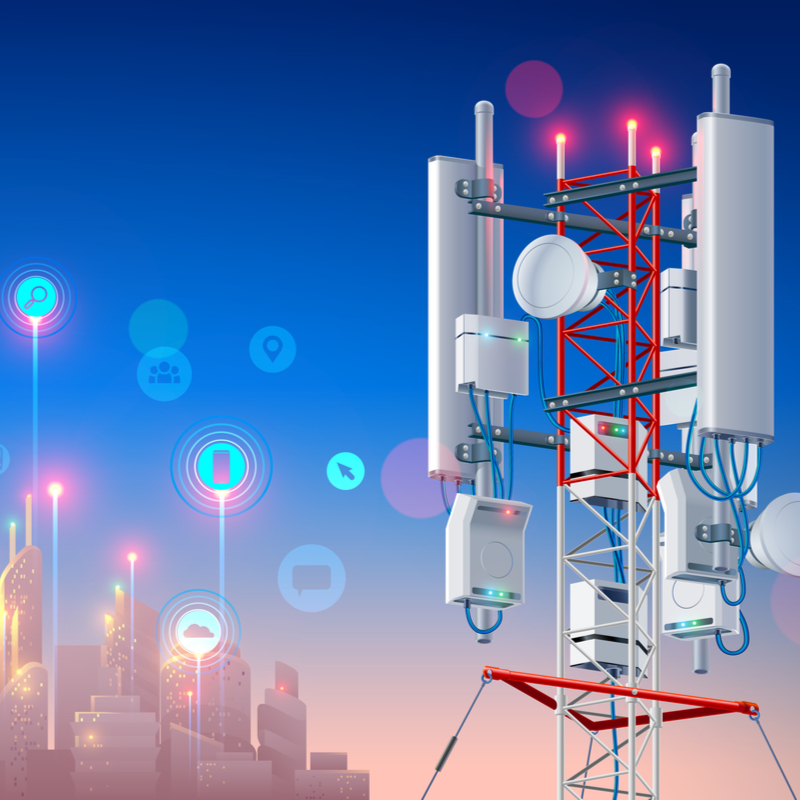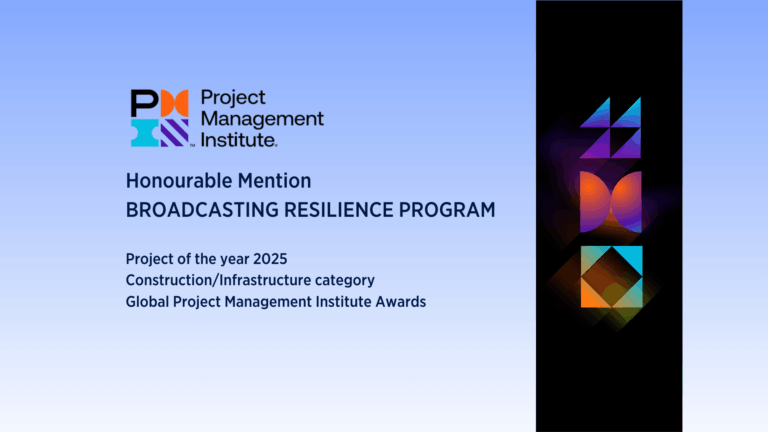Tara Neal, Executive Editor of The Fast Mode spoke to Andrew McGrath, Group Chief Commercial Officer at BAI Communications, a leading shared communications infrastructure provider, on the company’s growth and acquisition plans as well as some of the company’s latest deployments in the shared infrastructure space.
Andrew discusses how the demand for 5G neutral host networking is seeing rapid growth as 5G rollouts are picking up speed and how emerging 5G use cases, including Open RAN and Industry 4.0, are pushing operators to adopt the cost-efficient neutral host infrastructure model.
Tara: How will the recent acquisition of Vilicom and the expansion of BAI Communications’ operations in Italy bolster the company’s presence in the European market?
Andrew: There is immense market opportunity for shared communications infrastructure to enhance connectivity for citizens across Europe. It’s an exciting time for BAI as we have been expanding our footprint and capabilities across the globe to help future-proof cities with the infrastructure they need to support a safer and more connected future.
Our investment in Vilicom represents a major expansion of our business in the UK and Ireland. Vilicom’s expertise in high performance 4G and 5G mobile coverage solutions combined with our existing capabilities is bringing scale to new and innovative in-building connectivity solutions for major venues across the country, like Croke Park stadium and Dublin Airport T2.
Expanding our business into Italy was a significant milestone in our global growth strategy. Designing and deploying communications infrastructure for high-density urban environments is a core part of our business offering and Italy is a market where there is abundant opportunity to explore this. Italy is one of the fastest growing telecommunications markets in Europe, and mobile network operators (MNOs), municipalities and private companies are responding positively to the neutral host model.
We are looking forward to exploring commercial opportunities in Europe as we continue to grow our business to become one of the leading 5G connected-infrastructure players in the region and worldwide.
Tara: What are the drivers pushing the growth of neutral hosts networks? What challenges do these networks address, when it comes to providing connectivity for every location and every device?
Andrew: 5G has been the key driver behind the acceleration of neutral host infrastructure in recent years. 5G promises significant benefits including faster speeds, lower latency, and greater capacity for connected devices. However, it is more complex and expensive to deploy than previous generations of technology. This is where neutral hosts networks are so valuable – they solve the financial challenges for MNOs that would traditionally build their own individual networks which is a costly undertaking. Adopting a shared infrastructure model is much more commercially viable for them. It also provides better quality coverage for customers by increasing reach, presence, speed, and network capacity that can’t be achieved by a single operator. For example, if one MNO was to deploy a network it will only be accessible to their own customers resulting in a poorer connectivity experience for customers of other MNOs. By utilising one shared network, MNOs can reap the financial benefits while simultaneously delivering improved experiences for their customers.
From an operational perspective, the neutral host model is also a turnkey solution. BAI can manage the end-to-end process from securing access to real estate, dealing with local authorities, applying for approvals through to successful deployment. This makes it significantly faster and less expensive for MNOs to scale a 5G offering and ensures they are future-ready for when the next generation technology is developed. Overhauling a network requires both time and significant investment, but our networks are designed with future innovations in mind.
Tara: What are the underlying technologies that are accelerating the deployment of neutral host infrastructure?
Andrew: As the global 5G rollout continues, MNOs are encountering significantly higher costs to deploy and maintain their own networks. This is creating an industry-wide shift that favours the neutral host model. The demand for 5G networks is also higher than previous cellular technologies, particularly for enterprises, due to faster connectivity and new data applications it delivers. This places pressure on MNOs to be able to scale quickly to meet this demand. As the world moves towards an ‘always connected’ society, uninterrupted connectivity in cities, public spaces like transit hubs and major venues like stadiums for example, has become an expectation. In these kinds of environments, 5G neutral host networks make the most commercial and practical sense.
Industry 4.0 is very much here now, as technology like AI, machine learning and data analytics continue to mature, businesses will be able to realise new capabilities. These technologies require reliable communications networks to support them. As part of BAI’s partnership with Sunderland City Council, we are building a 5G neutral host network to enable digital transformation and support Industry 4.0 in areas like smart manufacturing and connected and automated logistics, unlocking efficiencies, improving competitiveness, and attracting investment in the area. BAI is enabling key community initiatives like air quality monitoring sensors, smart bin sensors and homes for healthy ageing programmes, to name a few.
The Small Cell Forum forecasts the dominant business model for connectivity infrastructure deployment over the next decade will be neutral host networks, deployed in enterprise environments for public use, and to support multiple operators or service providers. As the rollout of 5G mobile infrastructure continues, shared infrastructure is not only an advantage but a necessity.
Tara: How is 5G, specifically 5G O-RAN impacting operators’ stance on shared infrastructure?
Andrew: MNOs understand the realities of deploying a 5G network – that it is significantly more complex and costly for them to go it alone. MNOs are responding very positively to neutral host providers like ourselves and understand the value we bring. BAI has worked with leading MNOs in the United States, Canada, Hong Kong, the UK and Ireland.
As for 5G O-RAN, this technology gives MNOs the flexibility to mix and match software and hardware from multiple vendors to allow for network customisation. With O-RAN, a virtualised, flexible network allows MNOs to onboard new software from innovative start-ups, leading to faster time-to-market. It also removes lock-in with existing equipment vendors so MNOs can leverage different solutions to suit their needs, with the benefit of lower total ownership costs. O-RAN is supporting growth and development opportunities in this way and a significant proportion of private 5G networks are already trailing O-RAN based solutions. In our work with Sunderland City Council, we have partnered with network software provider Mavenir to deliver 5G neutral host network based on O-RAN technology that will enable us to deploy the network in a more agile and flexible way.
Tara: What are some of the biggest use cases we see today for neutral host networks?
Andrew: A significant portion of BAI’s business is in the transit space, deploying neutral hosts for transport networks in very dense and complex environments where a shared network is the only viable option. We own and operate some of the largest neutral host networks in the world in New York and Toronto. As part of our 20-year partnership with Transport for London (TfL) work is underway in building the city’s first 5G network which will provide constant connectivity for commuters using the London Underground throughout 136 stations by 2024. The network will also connect to buildings and street assets housing small cells to leverage the power of 5G and IoT to deliver improvements in areas like traffic monitoring and congestion, public safety, and city planning. To add to this, we are seeing shared infrastructure play a more relevant role in accelerating smart city development. Smart city applications require robust communications networks which BAI can provide at scale.
Another area where the neutral host model is gaining momentum is in improving coverage and capacity for large indoor and outdoor venues like stadiums and sporting arenas. In the US for example, Mobilitie is bringing next-generation wireless technology and state-of-the art connectivity to downtown Los Angeles’ Crypto.com Arena and its adjacent 4 million square foot sports and entertainment district, L.A. LIVE. This includes deploying one of the fastest and most technologically advanced neutral host networks in the country for Crypto.com Arena. The 5G network is designed to not only meet current connectivity demands but enable improved venue operations in the future by accelerating tech-forward initiatives and fan-enhanced experiences like augmented reality and virtual reality. The network will also integrate with over 1000 small cells in the area so that visitors can enjoy fast and reliable connectivity whether they are attending a basketball game or concert or dining out at one of the area’s restaurants.
5G connectivity layered with technology like AI, data analytics and IoT will be one of the greatest enablers for public and private enterprise we have seen in decades and will contribute significantly to smart city evolution. To be effective, these applications need a lot of data. Shared infrastructure that is used by all MNOs is a lot more useful for city planners and public organisations to deliver responsive and accurate services. With greater connectivity, there is a real opportunity to help improve the lives of citizens to help make cities safer and smarter. This is especially true in the light of the pandemic which highlighted the need for enhanced public safety measures. In Toronto for example, BAI has designed a data analytics solution that provides insight into foot traffic and crowding throughout the system to help the Toronto Transit Commission (TTC) redirect resources to manage passenger movements.
Our work with TfL really highlights the value shared infrastructure plays in smart city development – it is all about readying London for future smart city applications by creating a robust backbone of connectivity. The same is true in Sunderland where our high-speed 5G neutral host network will support business growth and innovation and bring substantial social and economic benefits to the city’s residents, businesses, and visitors.
Tara: How is BAI Communications meeting the needs of customers from a wide range of verticals (for e.g., transit systems, smart cities, marquee venues) across different commercial models?
Andrew: While our customers span different industry sectors, they are all after the same thing – greater connectivity that enables them to deliver the best experience possible. The neutral host model can be adapted to suit different needs, and we work with our customers to deliver on their unique business needs. In some cases, we own and operate a neutral host network, whereas in other cases we can operate an existing network owned by a MNO, as a neutral host model.
One of the most exciting elements of our recent growth is our ability to access new customer segments and industry verticals. Our investment in Mobilitie for example, has significantly broadened our reach and enhanced our in-building venue capabilities for public infrastructure and transport hubs in the United States, with 10,000 small cells across 45 states.
In Europe, our expansion into Italy and acquisition of Vilicom has unlocked new partnerships and opportunities to deploy small cells to densify networks in urban environments and enhance connectivity for citizens and enterprises across a range of sectors. We are very much a global business and operating across four continents which allows us to leverage capabilities in our markets and share knowledge and resources effectively.
Tara: What will be BAI Communications’ major strengths in this market? How has BAI created an edge for itself in this space?
Andrew: BAI has a proven track-record in financing, consulting, designing and deploying communication solutions that empower our customers to advance their services, accelerate their networks and amplify their reach in the most efficient and cost-effective ways possible. With a legacy that spans more than 100 years in communications, BAI has long been at the forefront of network advancement and our long-standing partnerships with MNOs and transit authorities highlight our reputation as a trusted delivery partner. Our expanding global footprint in North America and Europe positions us as one of the leading providers of connected infrastructure in the world and that is something we are very proud of. BAI has an exciting future and as 5G continues to rollout we are very much looking forward to helping build a more connected future to deliver tangible benefits for people and communities around the world.
This article first appeared in The Fast Mode.






